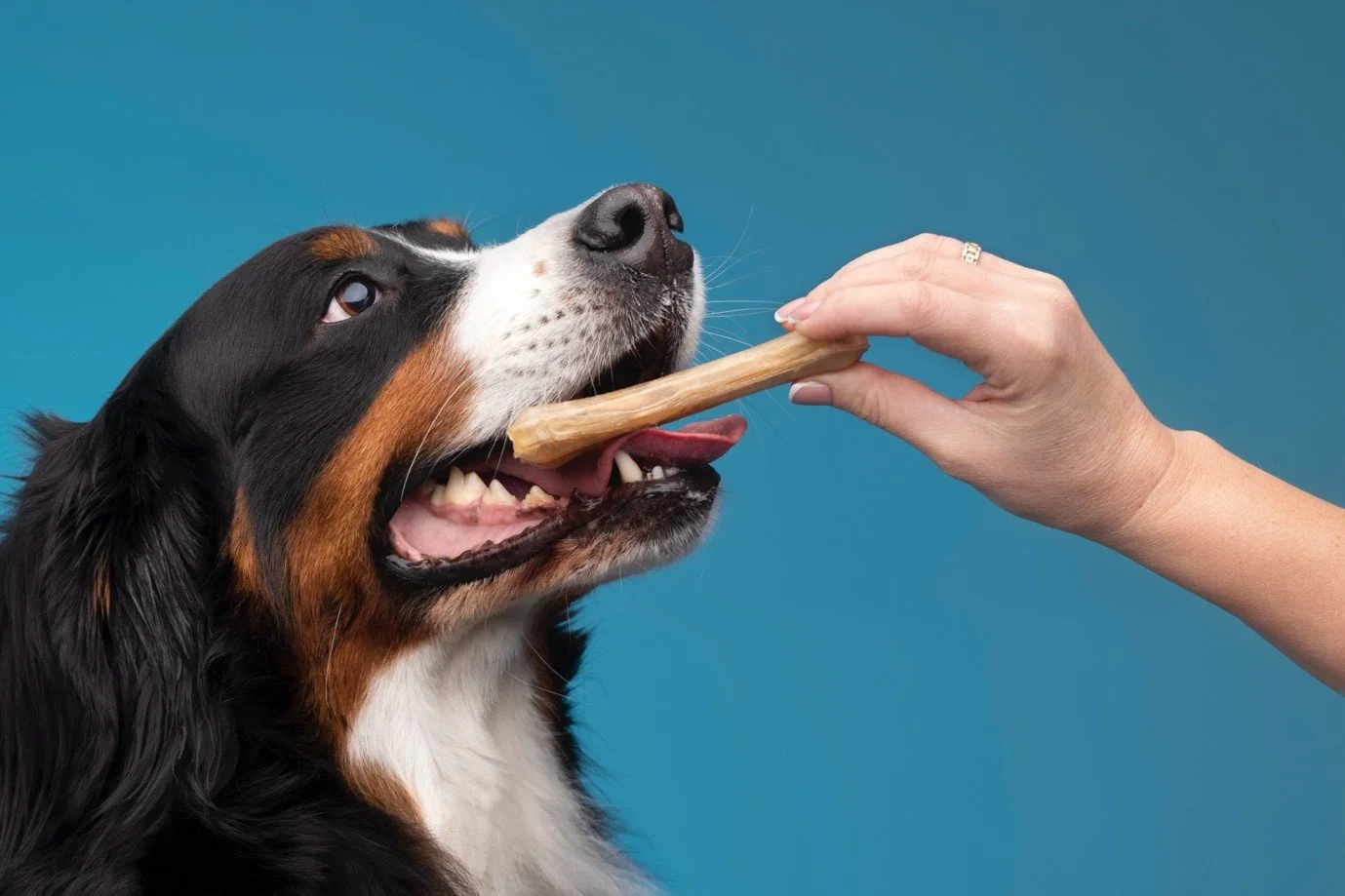Are You Rewarding or Overfeeding? How to Use Treats the Right Way
When it comes to showing love to our pets, treats are often the first thing we reach for. Whether it’s a little nibble after a walk, a reward during training, or a “just because” snack, giving your dog something tasty feels like the ultimate act of care. But is it possible to love our pets a little too much with treats?
The answer is yes—and it’s more common than you think.
Treats vs. Meals: Understanding the Balance
Treats are meant to supplement a dog’s diet, not replace it. Ideally, treats should make up no more than 10% of your dog’s daily calorie intake. But with a few extras here and there—plus some high-calorie store-bought options—it’s easy to tip the scale toward overfeeding without even realizing it.
Over time, this can lead to:
Weight gain
Digestive issues
Reduced interest in regular meals
Imbalanced nutrition
The key is to treat smartly.
Tip 1: Use Treats with Purpose
Treats should have a reason behind them—whether that’s for training, positive reinforcement, or mental enrichment. If your dog is getting snacks constantly, they stop being special—and you risk encouraging begging behavior or food-related fussiness.
Instead, keep a clear purpose:
Reward calm behavior
Reinforce commands
Offer during crate or grooming time
Use them to encourage enrichment (like in a treat puzzle or snuffle mat)
Tip 2: Know What You’re Feeding
Many popular commercial treats are packed with fillers, preservatives, and artificial flavors that don’t provide much in the way of nutrition—and can contribute to overeating and long-term health issues.
A good rule of thumb? If you wouldn’t eat it yourself, don’t give it to your dog.
Look for single-ingredient, freeze-dried, or air-dried treats made from real meats and organs. These are:
High in protein
Low in unnecessary fillers
Easy to digest
Rich in natural flavor (which dogs love)
Lecker Bites, for example, offers 100% meat treats with no additives, making them ideal for healthy snacking and training without the guilt.
Tip 3: Break It Down (Literally)
Most dogs don’t need a whole treat every time. Break larger treats into smaller pieces—even a pea-sized bit can feel rewarding to your dog when delivered with excitement and affection.
This helps:
Stretch your treat stash longer
Prevent overfeeding
Keep your dog motivated during long training sessions
Tip 4: Count Those Calories
Especially if your dog is on the smaller side, even a few extra calories a day can add up. Keep an eye on your dog’s overall intake—including table scraps, chews, and shared snacks—and adjust their meal portions accordingly if they’ve had a treat-heavy day.
Final Thought
Treats are a tool, not a diet. When used thoughtfully, they can deepen your bond, shape good behavior, and support your dog’s health—not sabotage it.
So the next time your dog gives you that irresistible look, go ahead—offer a reward that’s worth it. Just make it one that loves them back.
Looking for healthy, guilt-free snacks?
Explore our range of single-ingredient, freeze-dried treats made for mindful pet parents!


